Tibetan Mastiff 101: The Essential Guide
| Origin | Tibet, India, Himalayas, & Nepal |
| Size | Large |
| Height | Minimum of 24 to 26 inches |
| Weight | 70 to 120 pounds |
| Life Expectancy | 10 – 12 years |
| Breed Group | Working Group |
| Affection Level | ⭐⭐⭐ |
| Friendliness | ⭐⭐ |
| Activity Level | ⭐⭐ |
| Barking/Howling Level | ⭐ |
| Pet Friendly | ⭐⭐⭐ |
| Kid-Friendly | ⭐⭐⭐ |
| Shedding | ⭐ |
| Easy to Groom | ⭐⭐⭐ |
| Easy to Train | ⭐ |
Table of Contents
Origin
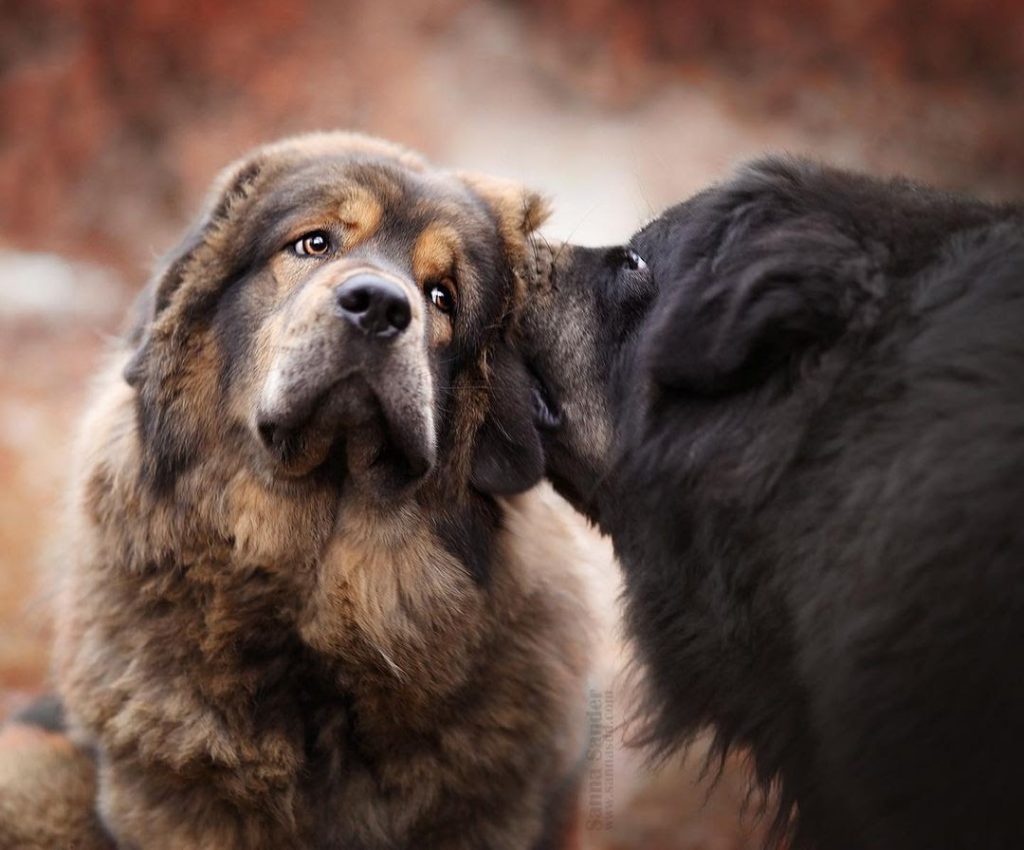

As with the name, the Tibetan Mastiff comes from Tibet. He is also believed to have been around in various other places like India, Nepal, and the Himalayas. Admittingly, not a lot is known about this Mastiff breed’s history prior to the 19th century. What is known, however, is that he’s been existing for many centuries already.
DNA study shows that all Mastiff-type dogs hail from Tibet and it is not impossible for the Tibetan Mastiff to be one of their descendants. Eventually, this breed developed into two types which are the Tsang-Khyi and the Do-Khyi. The former mainly served as a guardian for Tibetan Buddhist monks due to his larger size. Meanwhile, the latter was primarily used as a livestock guardian.
Queen Victoria of England received a Tibetan Mastiff in the year 1847 from the Viceroy of India. This became an important event that contributed to the dog’s history.
Its most remarkable arrival in the US happened during the 1950s when two Tibetan Mastiffs were presented to the president. Unfortunately, they vanished from the public eye as they were sent to a farm. Twenty years later, several more Tibetan Mastiffs were imported and they served as the foundation of the said breed in America.
Appearance
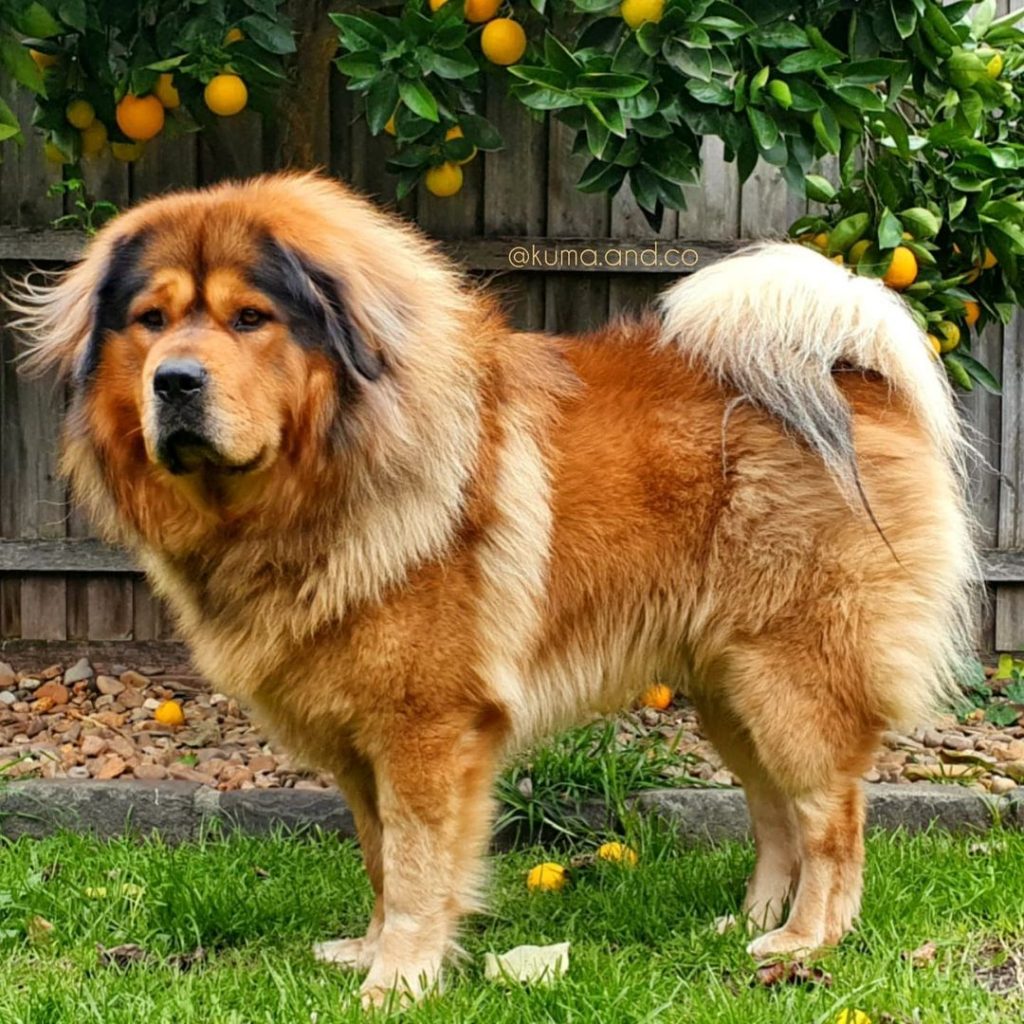

The Tibetan Mastiff breed quite resembles an adult lion. He has a heavy mane prominent around his neck and a thick coat that provides him warmth during the cold weather. This is a double-coated dog whose hairs can be described as coarse on the top and dense on the undercoat. He is fluffy and large and his height reaches 24 to 26 inches minimum and weight that measures around 70 to 150 pounds.
His glorious coat comes in several color combinations such as:
- Blue-gray
- Blue-gray & tan
- Black
- Black & tan
- Red gold
- Brown
- Brown & tan
- Cream
- Cream sable with white markings
The breed looks gentle in appearance yet alert at all times while displaying a fit and athletic impression. He has an imposing look, especially when he stands on his feet with his cat-like paws. His eyes are deeply set and brown; the muzzle, broad and square. His body length far exceeds his height, thus creating an intimidating yet fascinating overall image.
Temperament
The gentle expression commonly seen in the face of the Tibetan Mastiff won’t always mean he’s right for anyone or everyone. There is more to search through this breed before deciding to bring home a Tibetan Mastiff puppy. Take note, his kind look doesn’t mean he’ll give off Golden Retriever vibes. Know more about his temperament below…
Affection
One striking feature about the Tibetan Mastiff is that he’s highly attuned to the emotions of his owner. This large dog will comfort you once he notices that you’re sulking in the corner. He’s not afraid to be sweet with his family members!
It can be quite confusing though when he tries to defy your leadership yet at the same time, he showers you with his love. His fondness toward his favorite human doesn’t always happen all the time, however. He’s also an independent dog and would need some time for himself. This is a great trait for potential dog owners who don’t want an overly clingy pet.
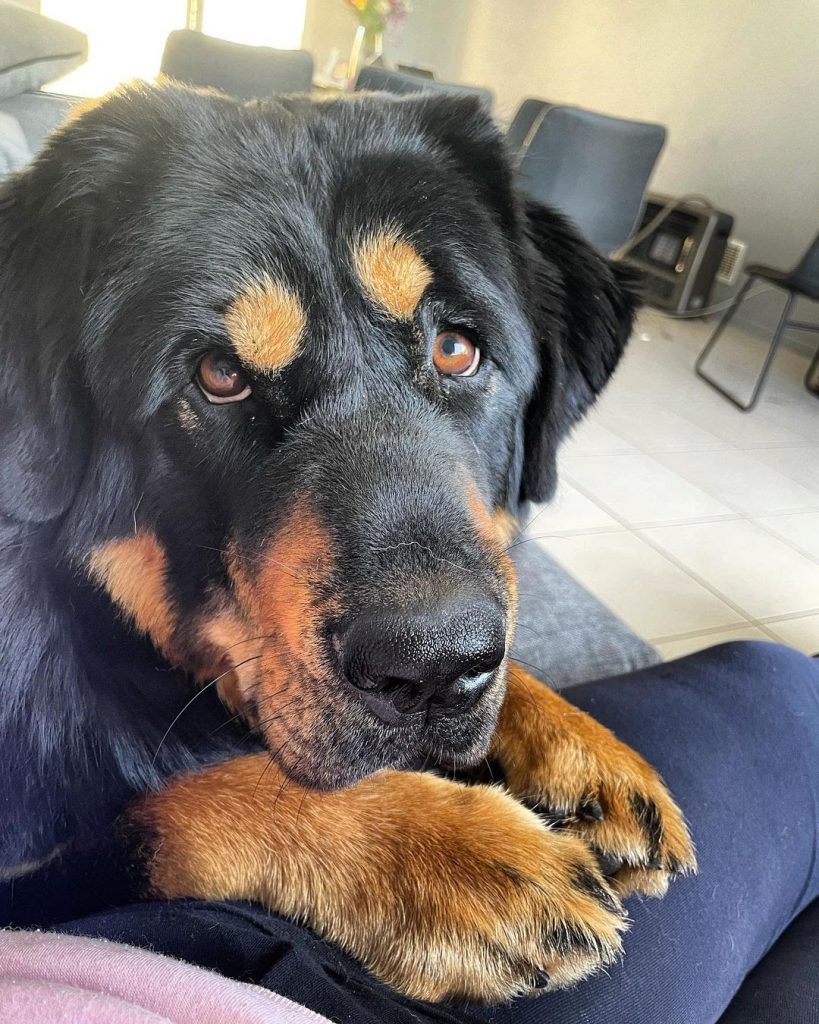

As mentioned earlier, he can sense one’s feelings. When an argument or a fight sparks between two family members or you’re scolding your kid, the Tibetan Mastiff will put himself in the middle and act as a mediator.
Friendliness
With proper training and enough exposure during his puppy years, the Tibetan Mastiff is ideally friendly. Usually, this dog gets on well with children when he’s raised with them. If ever they interact, someone should supervise it. He might not feel comfortable with the screaming, yelling, and other loud noises children make while playing and take these as a form of provocation.
Should you want him to get used to being around other dogs, do not be overly concerned regarding how he’d react. As long as you introduce them properly and that the other canine doesn’t bully him or show extreme dominance, then the socialization will result positively.
Furthermore, despite this dog being ferociously protective, he won’t be immediately charging toward a certain stranger. Rather, he’ll act standoffish and observe the person’s every little action. Should danger arise, he’ll meddle in and try to guarantee everyone’s safety.
Activity Level
The Tibetan Mastiff can often be seen sleeping during the day and active throughout the night. He has medium levels of energy, yet puppies being pups, will show greater vigor for playtime. They will jump around and make each day fulfilling, but ensure that they don’t tire themselves too much.
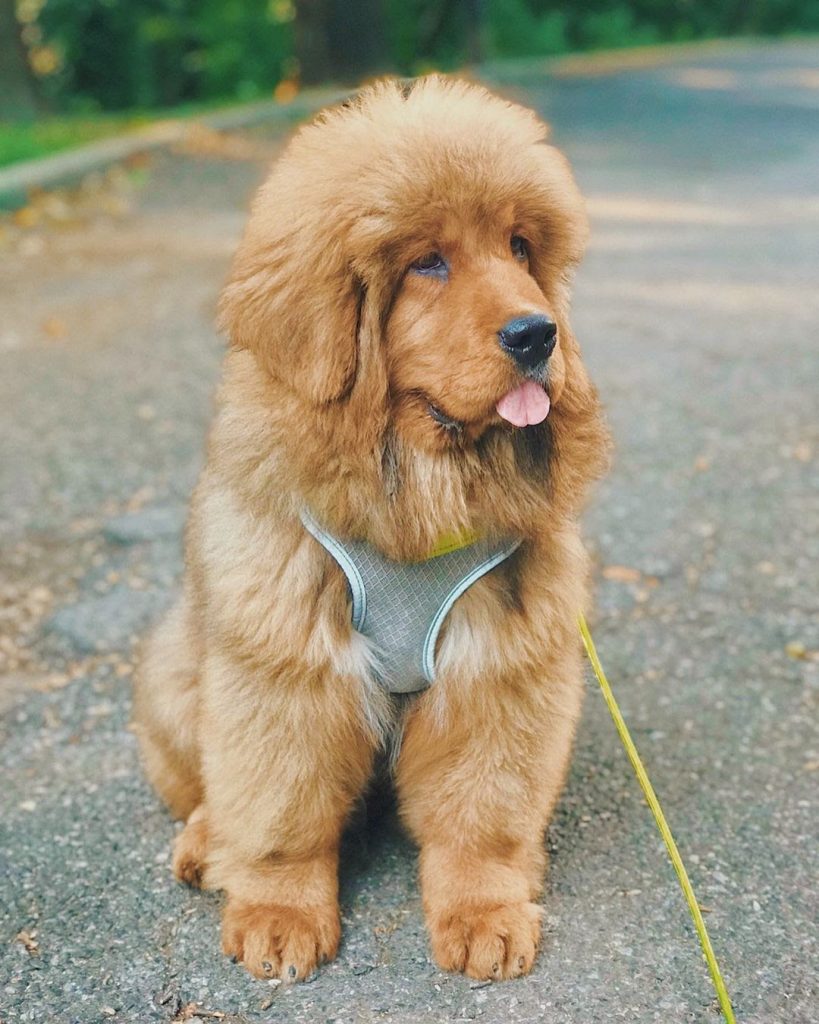

As for the adults, despite them being nocturnal and unmotivated to expend some energy for their large bodies to move even a few inches, this doesn’t mean that they are lazy. Most often than not, these dogs like to preserve and direct a huge chunk of their energy toward work. He’s highly proud of his duty as a protector and would prefer to patrol his territory rather than engage in silly dog games.
Care
Taking good care of a large dog is a unique responsibility. Expect him to consume certain amounts and type of food compared to a small dog, anticipate a longer time to spend for his grooming as well as provide certain activities to keep him healthy and fit.
Grooming
Sometimes, we tend to equate dense and long dog hair to high-maintenance grooming. Well, this doesn’t seem to be the case for the Tibetan Mastiff. His size, however, can be overwhelming to some who weren’t ready for a large dog. Nevertheless, for those who do, maintaining his hygiene won’t be a heavy task.
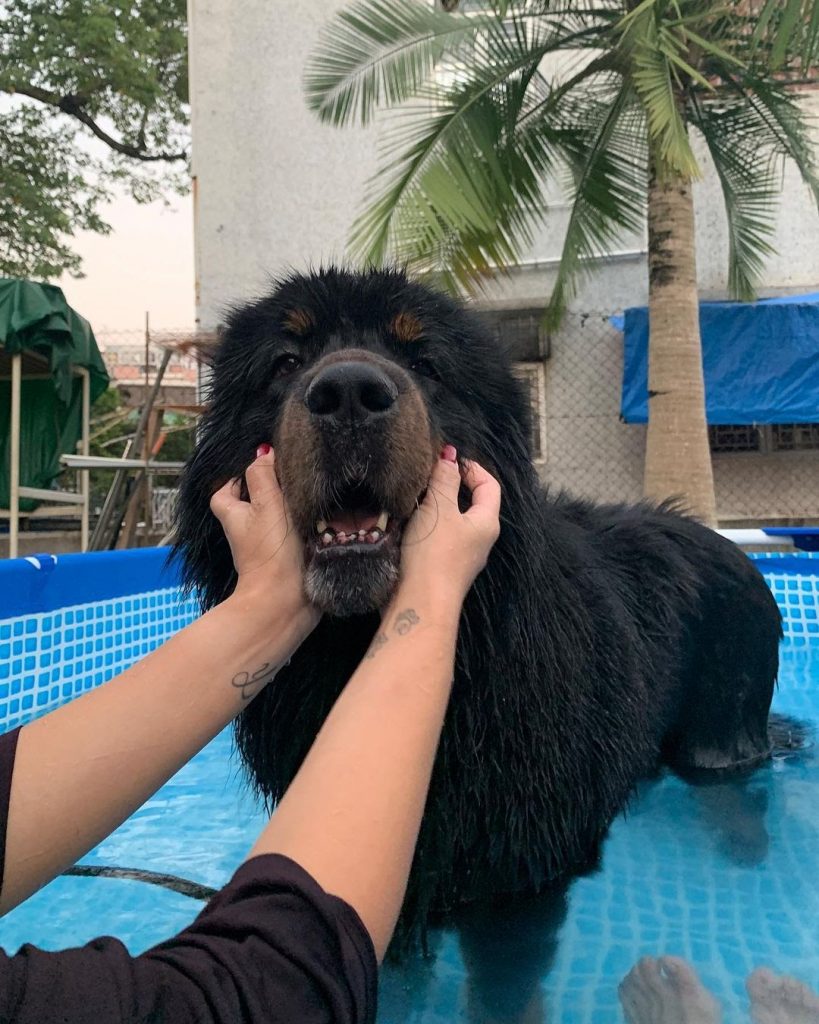

This breed blows off its coat once a year, so there’s no need to bathe him very frequently. Opting for a 6 to 8 weeks span for this or whenever necessary will do. However, with his immense coat, the right bathing and drying techniques will maintain his beautifully healthy coat and skin. Only use mild canine shampoo to avoid the disruption of his skin’s pH balance.
Do brush him once every week as a sort of maintenance as well using a slicker brush. If his hair starts to matt, his coat will be damaged. Moreover, the other areas that would also need your attention are his teeth, ears, and nails (trim these once he walks with clicking sounds). Check also the areas which are prone to tangles and excessive hair such as the thighs, ears, ruff, and tail.
Food and Diet
The Tibetan Mastiff does well in high-quality food whether you give him commercially produced dog food or home meals approved by the veterinarian. Despite his large size, he seems to eat only 2 to 4 cups daily. This will then vary according to his age if he’s still a pup, an adult, or a senior.
Commonly, this canine will only eat whenever he’s hungry. Skipping meals is deemed normal for him as well. When female dogs heat, male Tibetan Mastiffs will end up losing interest in engaging themselves in normal activities such as eating or sleeping due to their obsession with the female dog’s scent.
Always be familiar with which food you should avoid giving your dog and which ones are safe. To guarantee a healthy Tibetan Mastiff, bring him to the vet’s clinic for any signs of concern regarding his build or weight. Lastly, provide him with fresh water that he can freely access throughout the day.
Exercise
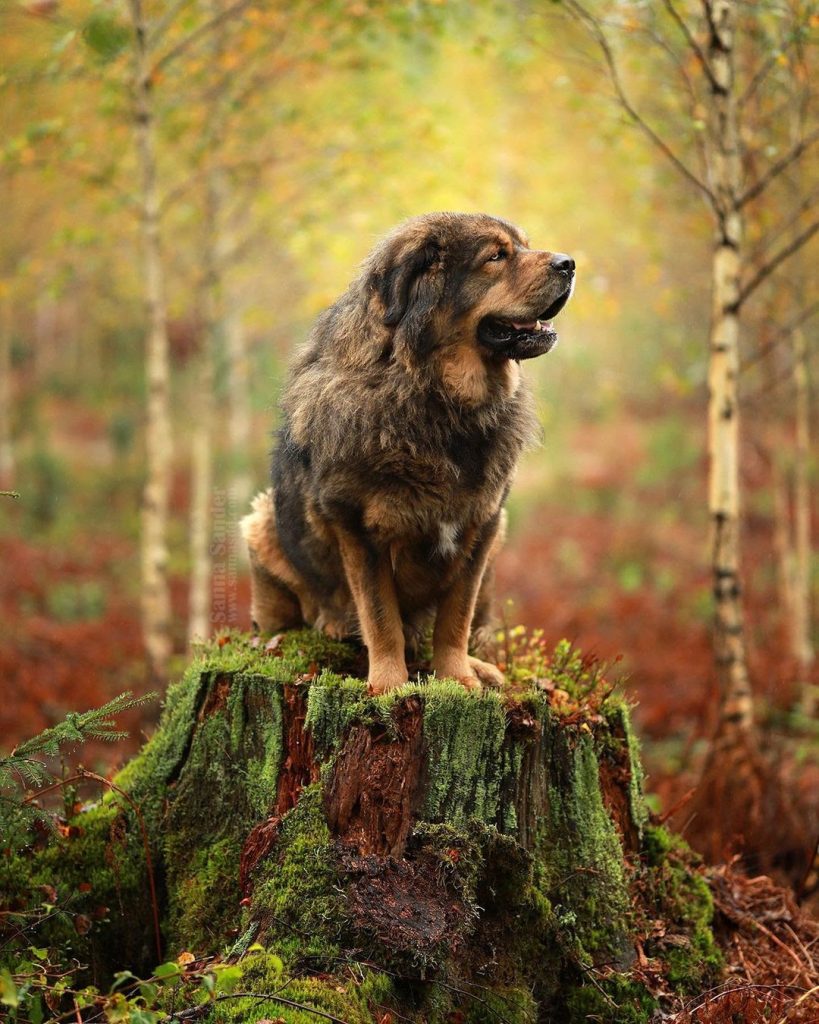

An average amount of exercise will do for your Tibetan Mastiff. Despite his moderate need to get moving, he’ll negatively react when he’s kept indoors all day. An hour spent daily is the minimum requirement. Split this period into 2 or 3 sessions with a bit of time allocated for him to play off-lead.
He has to be indulged with this regularly to keep him mentally and physically active. Exercising is also a great way to burn off unwanted fats. The breed is quite prone to obesity mostly due to insufficient knowledge regarding how much to feed such a large dog.
To keep him fit, you can introduce him to a treadmill. Get him to walk slowly in the machine and gradually increase the intensity once he’s fully familiar with it. Another way for him to have fun while stimulating his body is by letting him frolic in the snow. His thick coat serves as great protection from the cold. Just make sure that he’s in a secured area while doing this.
Training
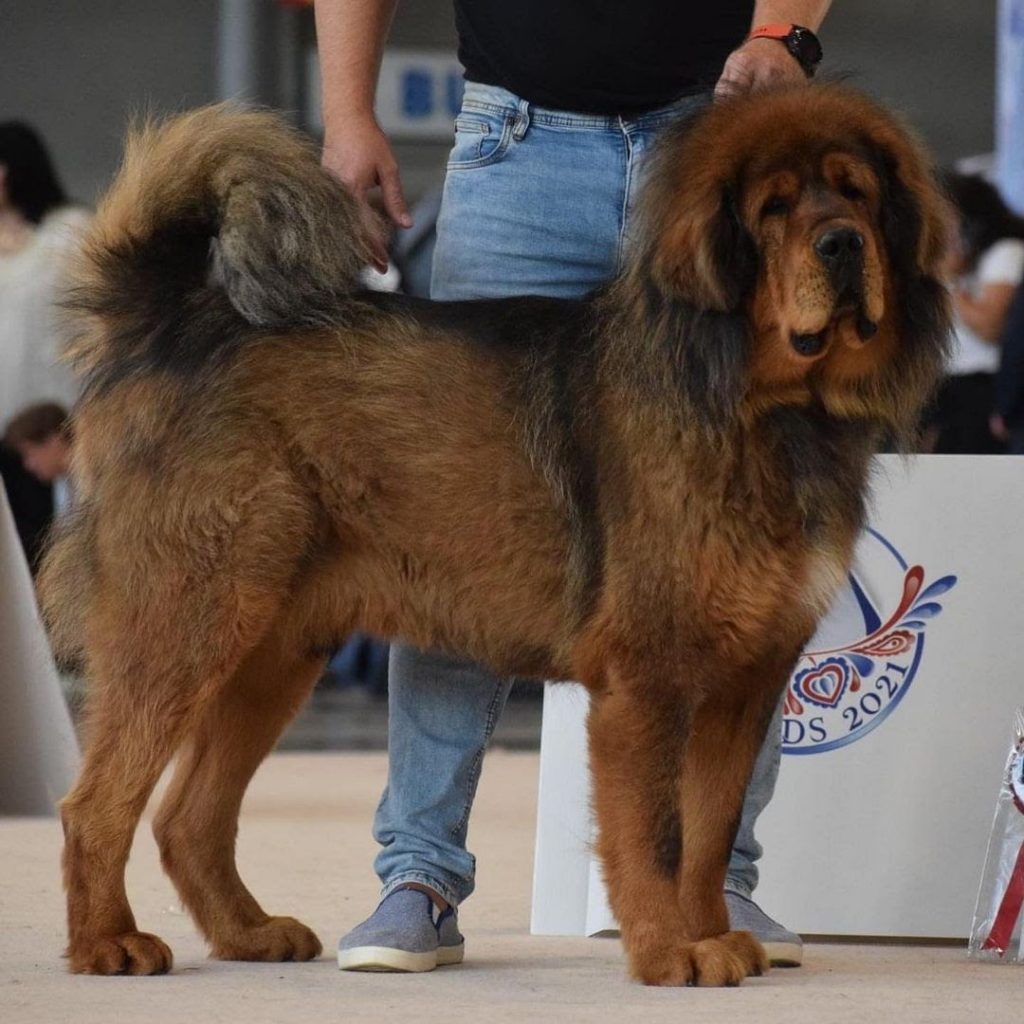

Consider yourself lucky for owning an intelligent and handsome dog such as the Tibetan Mastiff. He seems to have it all! He boasts of his history in accompanying Greek, Persian, Roman, and Assyrian armies which should give us a hint already that he’s used to being trained as a war aid.
Now that he’s commonly a house pet, the Tibetan Mastiff’s protective instinct still soars. Get him socialized early on with other dogs, your other pets, and properly introduce your guests. Hiring a dog trainer is good, but it is better that you do this yourself. During the course, you’ll also get to know more about your dog and at the same time grow a deeper bond with him.
Aside from training and social interactions, plays will also encourage good behaviors from him. Leaving him preoccupied can prevent him from becoming destructive.
Do remember, that this dog was also used as a guardian for livestock which means he was used to thinking and acting on his own. He has a level of independence that can give first-time owners a hard time training him. Be committed to making him see you as the pack leader or else, he won’t respect your authority and will eventually stop listening to your commands.
Health Problems
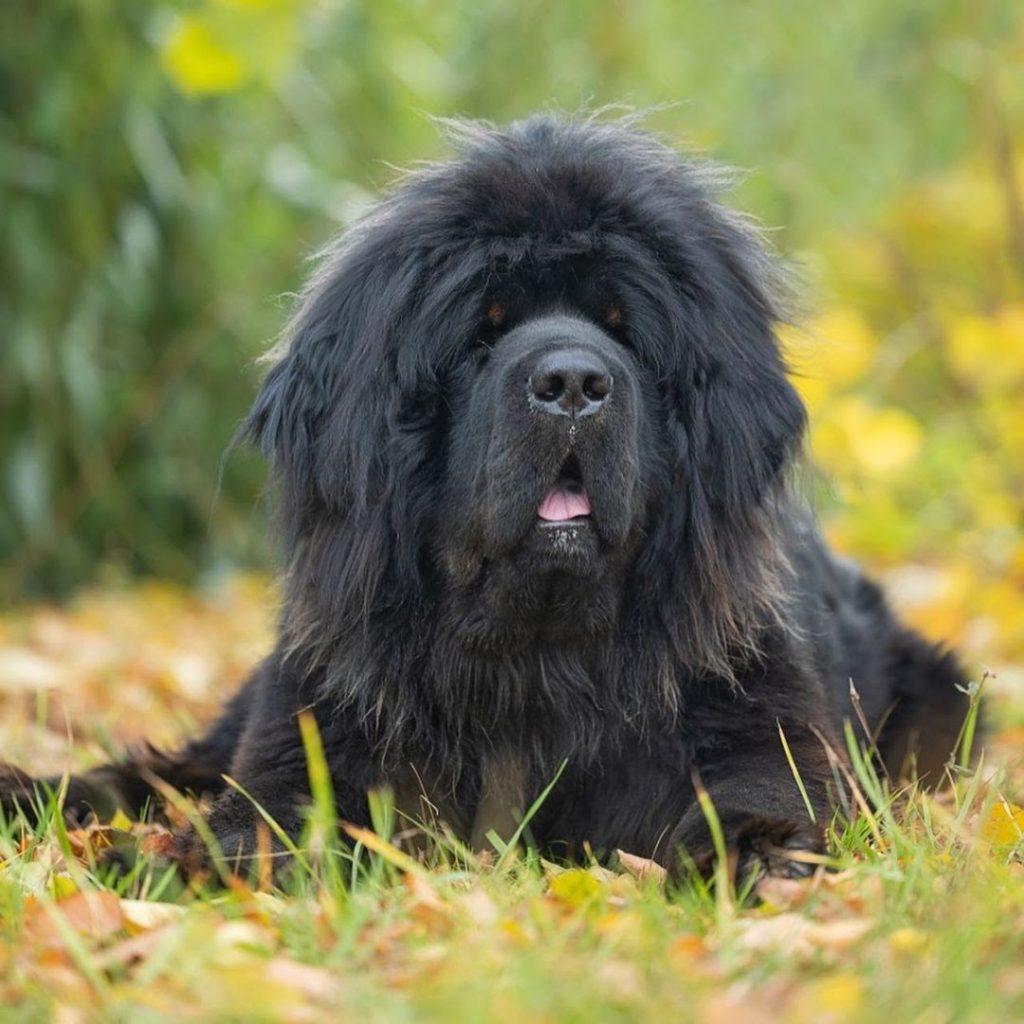

Caring for your pet means getting concerned about his health status. Although this breed is generally healthy, he’s known to develop several health issues which are also common to other dog breeds. By going for a reputable breeder, you are going to get a puppy from healthy Tibetan Mastiff parents. Reliable sources conduct a series of health tests, screening which dogs are suitable for breeding and which ones are not.
Still, despite being born healthy, the dog can suffer from certain diseases at one point in his life. By being aware of what these are, your vet can tailor a preventive measure or a treatment plan in case an illness has formed already.
Here are some of the health issues you should know about:
- Dental disease
- Infection
- Hypothyroidism
- Hip and elbow dysplasia
- Entropion or cataracts
- Canine inherited demyelinative neuropathy
- Parasites
- Bleeding disorders
- Epilepsy
Pros and Cons of Having a Tibetan Mastiff
By choosing the Tibetan Mastiff, you’ll surely be in for a treat! He’s got lots of nice perks and qualities that can brighten up your homes and fill each one with his abundant affection. Know what the positives are about this breed and which characteristics of him can be a disadvantage for you.
After that, you can weigh on whether you can deal with this large canine or not.
Pros
- Extremely loyal
- Has a penchant for work
- Very easy to groom
- Acts as an excellent guard dog
- He’s easy to housebreak
- Commonly a great family dog
- Perfect for the elderly
- Majestic in appearance
- An adult Tibetan Mastiff is calm and quiet indoors
- He loves outdoor activities
- Gives off an imposing look
Cons
- Extreme territorial instinct
- Challenging to train
- He can be destructive
- Potential aggression
- When threatened, he can be painfully loud
- He has several health problems
- He has a strong temperament
- Not suitable for smaller or cramped homes
- Strong-willed
Do Kennel Clubs Recognize the Tibetan Mastiff?
Yes of course! Two major clubs acknowledge this splendid fluffy dog. The Kennel Club (UK) has officially included this dog in their Stud Book and gave the name “Tibetan Mastiff”, leaving behind his old name as the “large dog from Tibet”. Just in 2006, the American Kennel Club recognized this canine as a breed and a working dog by 2007.
Various clubs and organizations dedicated to the Tibetan Mastiff breed were formed earlier than these dates such as the Tibetan Mastiff Club of America which was founded in 1974.
Cost
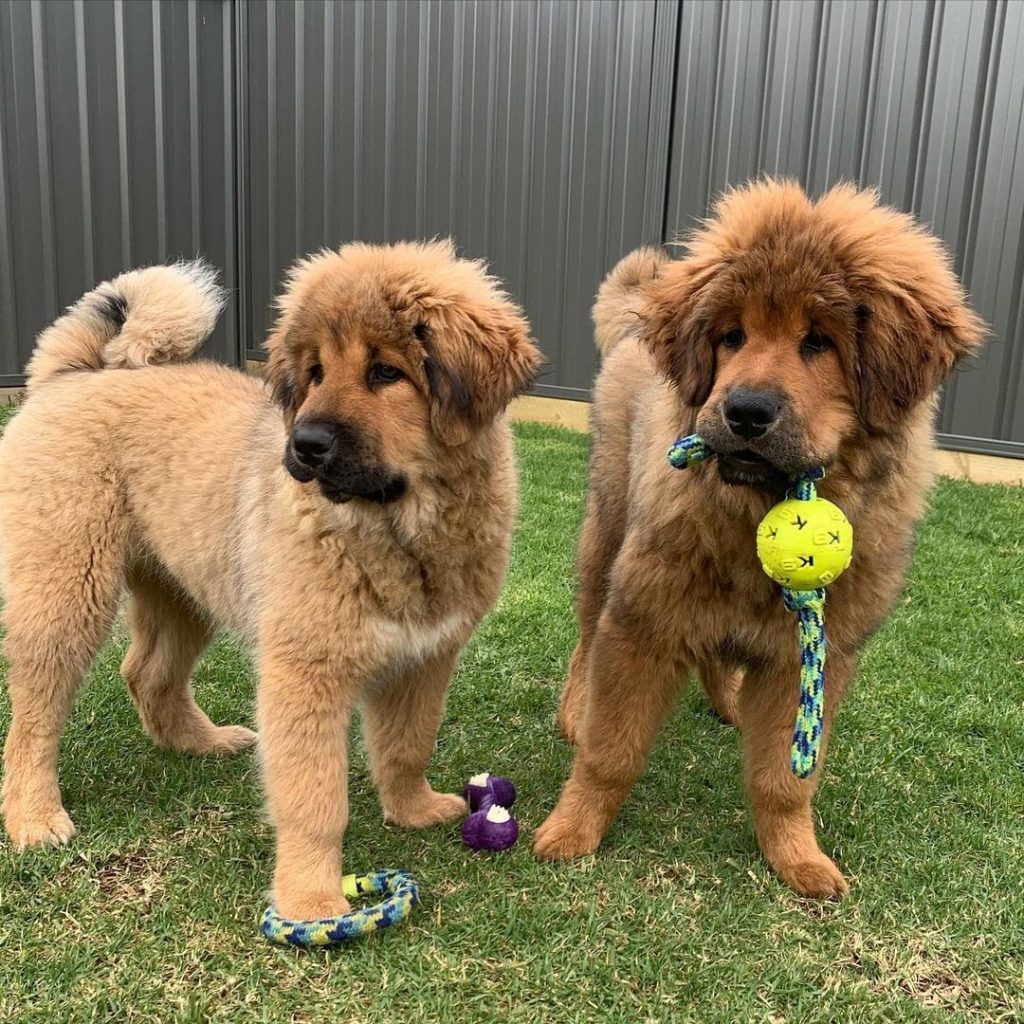

If you are wishing to own a Tibetan Mastiff one day, prepare your pocket for heavy spending. This is one pricey dog with an average cost of $2,500. The lowest price for him is around $1,800 and the usual most expensive price tag is 4,500.
What mostly determines the price for each puppy is mainly based on whether it’s purebred or mixed, breeder’s reputation, pedigree, medical expenses, breed popularity, location, age, coat color and markings, and training and socialization.
By the first year of having him, you might spend an estimate of $6,000 and this will transition to just $2,600 the following year. If calculated, the average cost of owning a Tibetan Mastiff throughout its lifetime is about $32,000.
If you want to save more while having the dog of your dreams, rescue shelters will be ideal. They normally just charge $300 to cover certain expenses.
Where to Adopt or Buy a Tibetan Mastiff Puppy
Have you deeply fallen in love with the whole imposing look of the Tibetan Mastiff? Aside from his attractiveness, he also offers a wide variety of perks such as his superb intelligence, independence, reliability, and great guarding skills. To aid you in searching for the perfect dog, I have listed down below a few reputable places where you can buy or adopt.
BUY
ADOPT
Once you have chosen the place, don’t forget to thoroughly research it first. Be wary about pet scams which are common these days.
We understand how much you want to have in your arms a fluff-ball who’s dedicated to protecting his family and teaching everyone how a dog shows his endearment. In return, be devoted to showing him back how an owner reciprocates his priceless love. To learn more about this dog breed, watch out for more articles about the Tibetan Mastiff!
